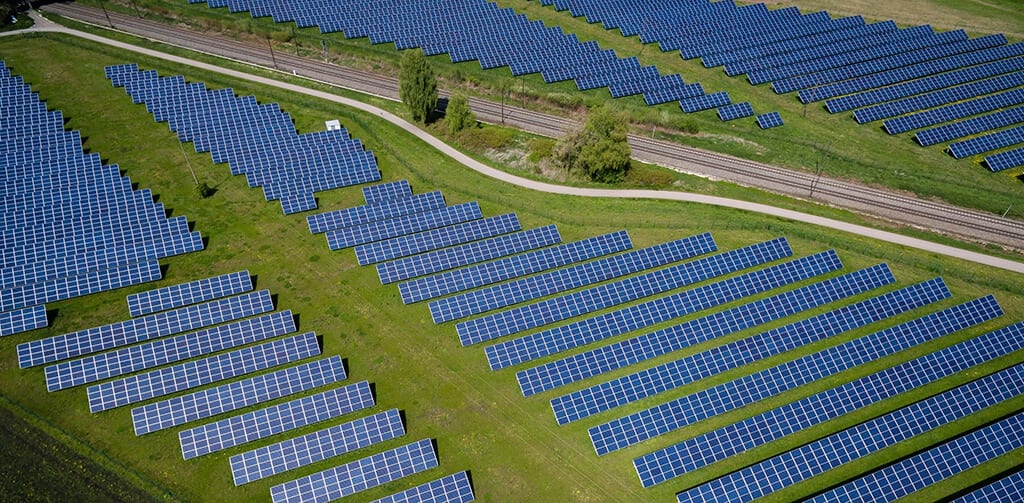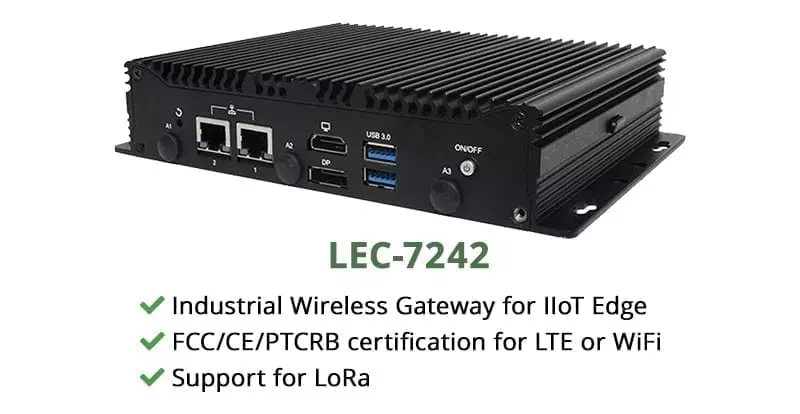
Inevitably, solar power panels will fail. One way or the other, dust will start to accumulate on panels, micro-cracks will start to appear, degradation, corrosion, snails will leave their tracks, all of this (and more), will lower the energy output.
Monitoring the solar PV farms, their components, and the connections between them are critical for ensuring operational continuity and even improving productivity. The solar PV monitoring system collects data from IoT/IIoT sensors, aggregates it, and sends it off to a cloud-based server, for further analysis.
Summary
Monitoring a solar power PV plant can be challenging, especially because these are remote and unmanned places, and have limited resources.
Some solar power plant companies are innovating with new IoT and IIoT sensors, and telemetry technology. They are generating more quantities of data at the source. But this new data is also bringing new challenges like, what to do with disparate data? How to integrate it? How to use this data and move it efficiently?
We will be reviewing a solar PV monitoring solution that helps resolve most of these challenges. Lanner’s LEC-7242 is an intelligent edge IoT Wireless Gateway appliance. It brings more computation, storage, and communication prowess closer to the endpoints (where solar PV panels are). This Industrial IoT Gateway is a perfect fit for solar power PV farms monitoring because it supports multiple transmission protocols and is designed to work under harsh environmental conditions.
Challenges
Below are the most common challenges when monitoring remote and unmanned solar PV farms.
Challenging O&M in remote solar PV farms
Solar power plants are often located in unmanned and remote areas which complicate the O&M (Operations and Maintenance) processes. Depending on the size of the solar PV farm, the solar power companies would need to have an agent on-site or someone traveling daily. Additionally, these remote and outdoors solar PV farms face unpredictable changes in climate and often harsh climate conditions— where traditional IT equipment is prone to fail.
Network Limitations
New IoT/IIoT sensors generate large and varied data which could be useful for efficient monitoring and management. But, having to move large amounts of data, reliably, and fast, is very challenging, especially for current off-grid and remote sites. The reason is that there is a lack of reliable and fast bandwidth in these areas. Hard-wired installations can be very expensive solutions for off-the-grid solar power plants.
Current SCADA limitations.
Solar Power plants and substations have been traditionally monitored using SCADA systems. The SCADA sensors gather data and send it to an RTU (Remote Terminal Unit) which is wired to a nearby server. RTUs gather data in real-time from sensors, inverters, or trackers and transmit it back to the MTU. Typical solar power SCADA solutions use fiber optics for upstream communication (RTU to MTU, but this can be an expensive and non-scalable solution.
- Network limitations. When deployed off-grid, usually, RTUs don’t have the right amount of network resources to send large amounts of data. Although there have been attempts to improve remote SCADA with telemetry technology, there are still many limitations when it comes to long-range and power-efficient data transmission.
- Challenging scaling. As the SCADA environment grows, the performance starts to degrade drastically.
- Lack interoperability. A device made from a different manufacturer cannot be easily integrated with other devices. SCADA creates siloed processes.
Solution
The solar power PV monitoring solution can address most of the discussed challenges efficiently. It is composed of the following elements:
- Field IoT/IIoT data collectors from, solar plant inverters, strings, temperature sensors, humidity sensors, the combiner box, etc.
- The Industrial wireless gateway, aggregates data from solar PV assets, analyzes it, and routes it to a cloud-based or on-premises control station.
- Control station + software: The cloud-based control station receives data from the industrial IoT gateway, where additional Solar Power Management/Monitoring Software can be used for O&M, reporting, and alerting.
Data Collection: IoT Sensors and Meters
The IoT/IIoT sensors and meters gather data from the field. They can be anything from solar plant string inverters, combiner boxes, pressure sensors, temperature sensors, humidity sensors, etc. These data collectors transfer their data to the nearest IIoT gateway, via wireless (such as LTE or WiFi) or wired (such as Ethernet).
The Industrial Wireless Gateway
The Industrial IoT wireless gateway acts as the access point for all the IoT/IIoT devices to another network (such as private cloud central station, or public cloud). It may use wired (Serial or Ethernet) or wireless (LoRa or WiFi) interfaces for downstream transmission, and 4G-LTE or wired for upstream — to send the results to the central station. But, the Intelligent edge IoT Gateway can do more than just provide routing. It also aggregates the data collected by IoT/IIoT devices and performs edge analysis.
Lanner’s LEC-7242
Lanner’s LEC-7242 is an industrial environment gateway, empowered by Intel Apollo Lake CPU and FCC/CE/PTCRB certification for LTE or WiFi. The gateway is explicitly designed to work with the IIoT and IoT network environments, by aggregating their data and providing intelligent edge capabilities. The device ca run dedicated IoT software client (i.e., PV monitoring software) to explicitly keep track of certain parameters and send alerts to an on-premise monitoring center or cloud-based server.
The LEC-7242 device is also rich in I/O. It comes with wireless support for LoRa, WiFi and 4G-LTE.
Product Highlights:
- Processing: Intel® Apollo Lake Celeron® N3350/Atom® X5-E3940.
- Rich I/O: One serial Port (RS-232/422/485, DB9 Male), two USB3.0, and four SMA antenna holes.
- Strong Network: Two RJ45 10/100/1000 Mbps ports. Support for wireless expansion: One key socket w/ Dual SIM for LTE or WiFi, and one mini PCIe Socket w/ Dual SIM for LTE. The appliance is FCC/CE/PTCRB certified for LTE or WiFi.
- Harsh environment-ready: Wide temperature tolerance. Comes with a solid chassis and fanless interior design for passive cooling. The device is completely dustproof, and can operate in a wide range of temperatures 0°C~50°C / -20°C~70°C.
Head-end Software
The industrial wireless gateway takes the aggregated data and transmits it to the data center via Ethernet or LTE connectivity.
The data center is the perfect place to collect and integrate data from all distributed solar power substations. With the help of unified monitoring and management software, all this data can be used by agents to monitor, gain insights, make decisions, or even feed this data into an intelligent AI/ML inference engine.
Benefits
The most popular advantages of the Solar PV monitoring system are: reducing costs and the need for manpower, integrating with data acquisition systems like SCADA, increasing the productivity of solar PV farms, and introducing ML and predictive modeling.
Reduce Costs and Man-power
The LEC-7242, IoT gateway solution integrates data collection, analytics, and transmission into a single appliance. This level of integration reduces the need for extra resources. It helps operators remotely monitor in real-time different components of the solar power station, without having to physically visit the site.
Ways to reduce costs?
- Streamline operations to reduce maintenance costs.
- Centralize all monitoring remote solar power stations.
- Increase availability and minimize downtime.
Integrate with existing SCADA
The IIoT gateway solution can also be integrated with an established data acquisition system such as SCADA. The gateway collects and cleans the data acquired by SCADA and aggregates it, into a single data center control.
Although the solution does not replace SCADA — it improves upon the existing SCADA monitoring and controlling system. It brings machine intelligence, data analysis, scalability, interoperability, and standardization. Additionally, thanks to the improvements in some IoT’s radio technology with lower power consumption and wider coverage, such as LoRa, SCADA can be improved further.
Increase the Productivity of Solar PV Farms
The IIoT edge wireless gateway gathers data from multiple sources and combines it into a summary for easier data analysis. Using aggregated data from multiple sources helps build a better picture of the entire solar power farm. Now, remote operators will know which asset is producing more, and which ones are not, and the reasons why.
Data aggregation helps to have a more productive solar farm, by:
- Having access to broad data for quick decision-making.
- Analyzing and optimizing power generation efficiency.
- Identifying underperforming inverters, sensors, etc.
- Balancing energy consumption and peak demands.
- Detecting, preventing, and predicting power outages.
Introduce Machine Learning (ML) and predictive modelling
What the intelligent edge IIoT Gateway (LEC-7242) does, is that it takes this data, aggregates it (via wireless and wired capabilities), and performs edge analytics.
The IoT gateway runs the edge client for the IoT software. This IoT software allows the device to perform dedicated edge analytics, monitor specific parameters, and detect anomalies. It may also generate alarms to target on-premises personnel or send to a cloud-based monitoring and management center.
With the LEC-7242’s edge analytics capabilities, it is easier to identify patterns and spot trends that otherwise wouldn’t be visible. For example, by analyzing aggregated data, an intelligent model can introduce predictive maintenance schedules. The regular maintenance of solar power plants can be replaced for high-quality and timely servicing.
Next Steps
For more information on other Intelligent Edge Appliances or the Solar PV Monitoring Solution with LEC-7242, please contact Lanner’s sales representative.
Photo by Andreas Gücklhorn on Unsplash






